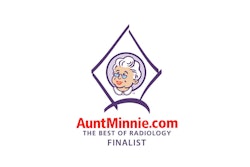More in Home
AI predicts death risk from COPD
October 31, 2025
Music lowers anxiety, pain for women undergoing mammography
October 31, 2025
5 ways to reduce gadolinium pollution
October 31, 2025
Meet the Minnies 2025 finalists
October 31, 2025
AI-CAD could improve breast cancer detection
October 30, 2025
FDG-PET/CT detects metastatic eye tumors
October 30, 2025
Malpractice factors tied to imaging use in emergency department
October 29, 2025
Experts, research highlight prevalence of remote breast imaging
October 29, 2025
Ablation procedures cure thyroid disorders in older patients
October 28, 2025
Mirai shows promise for detecting interval breast cancers
October 28, 2025
Radiomics models based on pituitary MRI predict GHD
October 27, 2025
Page 1 of 181
Next Page
















